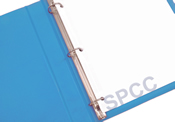
Each type of oil exhibits different characteristics, and thus contingency, response, and cleanup strategies may vary depending on the type of oil stored. In particular, the density of the oil is an indicator as to whether the oil will sink or float on the surface of water. While most oils have a density of less than one and tend to float on the surface, some have other characteristics and can sink in the water column. These are important considerations in determining the best method of responding to and containment of spills.
EPA’s SPCC regulation affects over 630,000 facilities. Is yours one? Download your EHS Essentials Kit—SPCC Plan Compliance now for all the tools you need to be in compliance. Download Now
PETROLEUM OILS
Petroleum oils are generally broken down into crude and refined oils.
Crude Oils
Here are some examples of crude oils:
Class A (Light Volatile Oils). These oils are highly fluid and thus can spread rapidly when spilled. They are generally clear, have a strong odor, a high evaporation rate, and are usually very flammable. Although they can be highly toxic, they do not tend to adhere to surfaces, and flushing with water generally removes them.
Class B (Nonsticky Oils). Class B oils are less toxic than Class A oils. These oils have a waxy feel and adhere more firmly to surfaces than Class A oils, thus requiring a more vigorous flushing with water for removal.
Class C (Heavy Sticky Oils). Characteristics of Class C oils include a viscous and sticky consistency and usually a brown or black color. Although toxicity is relatively low, wildlife can be smothered if contaminated. The oil is difficult to remove from surfaces and will often sink in water.
Class D (Nonfluid Oils). Class D oils are relatively nontoxic and black in color. However, when they coat surfaces, cleanup is extremely difficult.
Refined Oils
The following represent types of refined oils and their characteristics:
Gasoline. Gasoline is very light, spreads and evaporates quickly, and is highly flammable. Gasoline is amenable to biodegradation, but the use of dispersants is not appropriate unless a significant human health or safety factor exists.
Kerosene. Kerosene exhibits many of the same characteristics as gasoline, but it is not as
amenable to biodegradation. Thus, it is much more persistent in the environment.
No. 2 Fuel Oil. This oil is lightweight, spreads quickly, and is easily dispersed. It is not volatile, does not form emulsions, and is relatively nonpersistent in the environment.
Don’t risk an EPA fine! Stay in compliance with our EHS Essentials Kit—SPCC Plan Compliance. Download now for instant access to comprehensive checklists, common violations, training materials, forms, and more. Download Now
No. 4 Fuel Oil. Low volatility and medium weight are characteristic of No. 4 fuel oil. The oil can be dispersed if it is treated quickly, but it is somewhat persistent in the environment.
No. 5 Fuel Oil. Also known as “Bunker B Oil,” it is a medium-to-heavy material with low volatility. It must be heated in cold weather and is nearly impossible to disperse.
No. 6 Fuel Oil. This fuel oil may be heavier than water and does not readily dissolve or disperse. It has low volatility, and because of its heavy weight, it often sinks and forms tar balls, lumps, and emulsions. No. 6 fuel oil is also referred to as “Bunker C Oil.”
Lubricating Oil. Although it is somewhat persistent in the environment, most lubricating oils can be easily dispersed if they are treated promptly. Lubricating oils are used for various commercial and industrial applications and may vary extensively in viscosity.
See tomorrow’s Advisor for what you need to know about SPCC and nonpetroleum oils.

Thank you very much for your Environmental Daily Advisor (EDA)! Your EDA is an invaluable tool. They are outstanding educational tools for Safety Briefs and managing our Unit’s environmental programs.
Sincerely,
Darsi Crane
75th Logistics Readiness Squadron
Hill AFB, Utah 84056